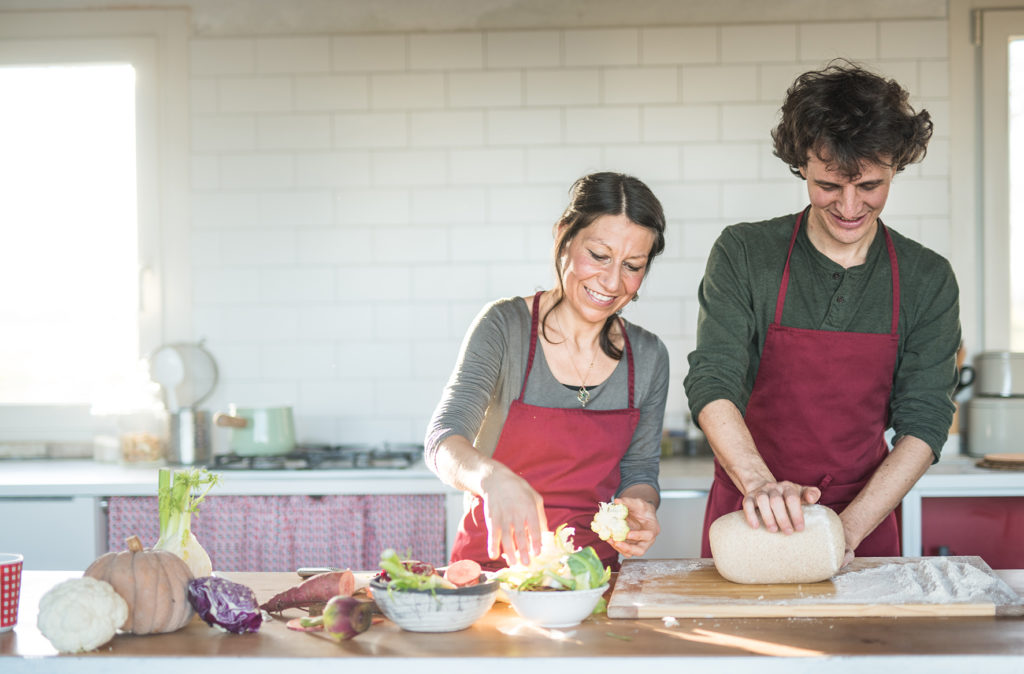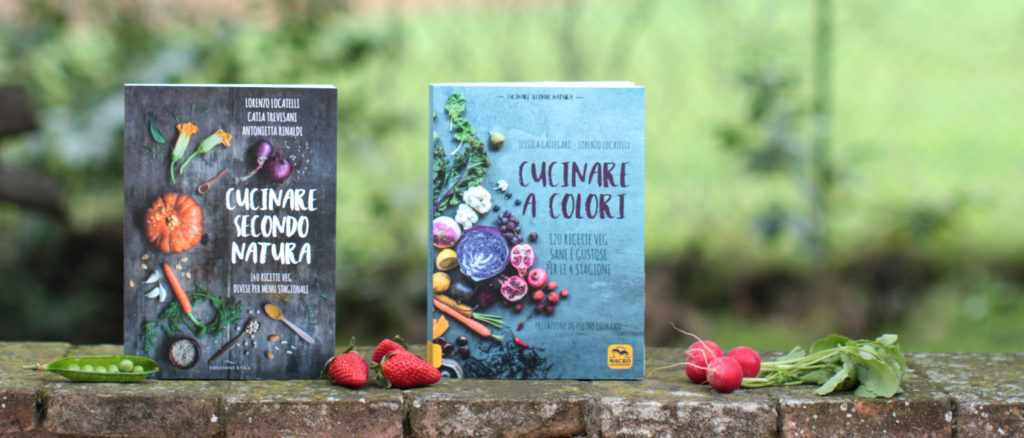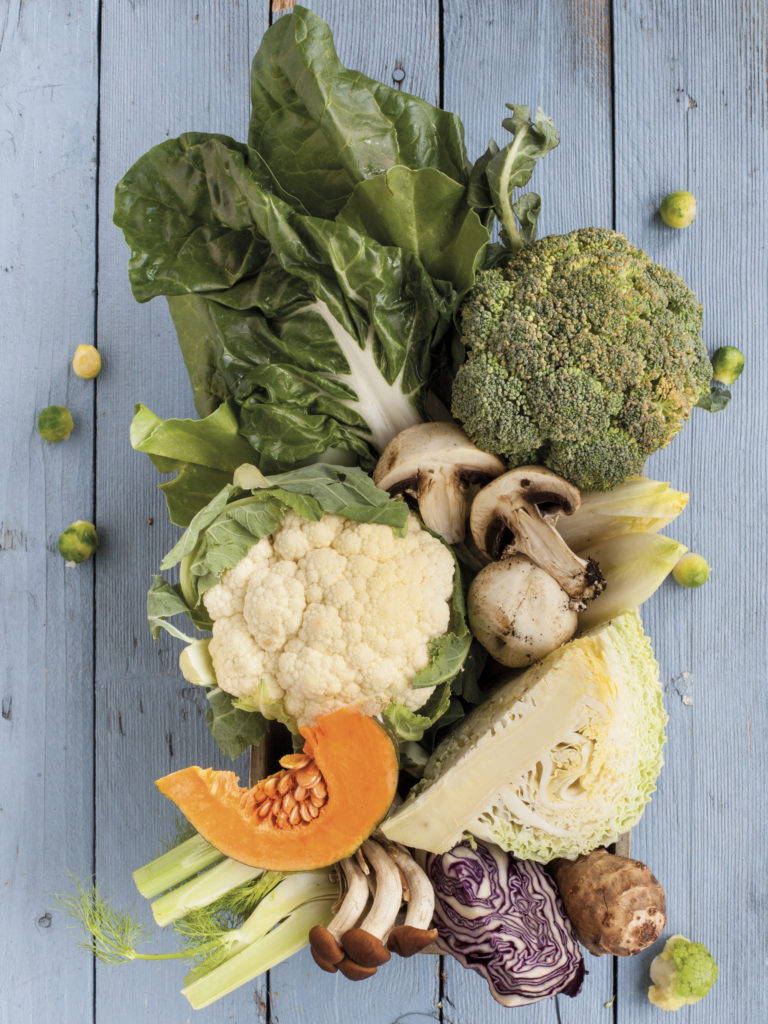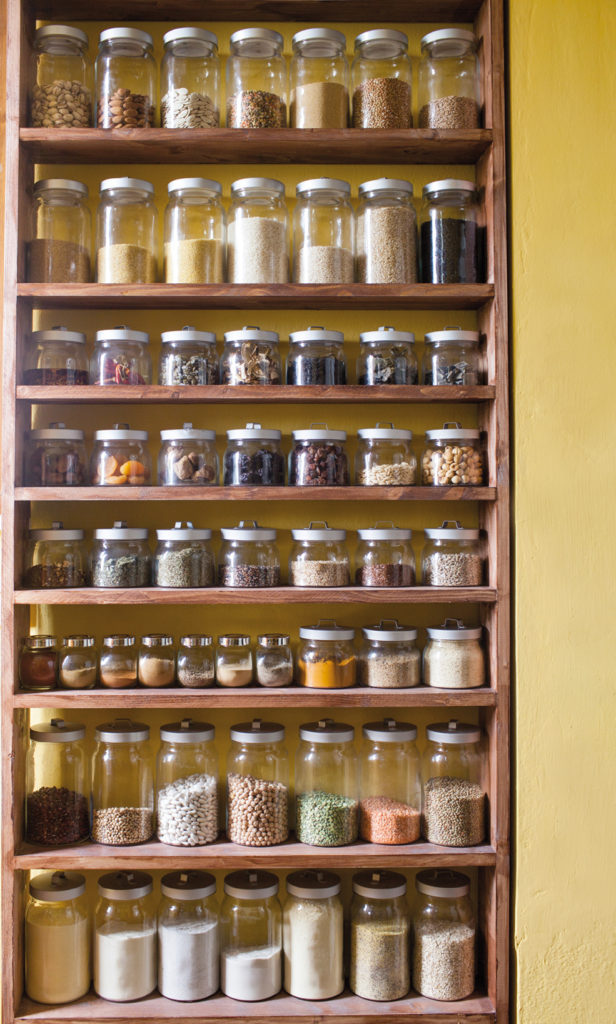Welcome!
Thanks for stopping by. On this blog you will find recipes, insights, stories, experiences and a lot of passion about cooking, and the choices we make.
We are Jessica and Lorenzo and we live in the hills surrounding Parma (Italy). We are a large family. Lorenzo’s children are called Gaia and Pietro, and Jessica’s children are called Iole and Anita.

We view cooking as an act of commitment and love towards ourselves, the people we live with, the people we meet and our planet. Food gives us energy and should therefore be well suited to our needs, while also respecting all living creatures. Food connects us to the earth and nature and can help us to progress.
Our blog and activities are intended to help people discover a new sort of food culture that isn’t just limited to cooking, but has a much deeper meaning, which is in tune with an awareness of our present and future selves.
On this blog you will discover that a healthy diet is achievable without the need to sacrifice flavour. You will also discover many important values such as ethics, sustainability, health and happiness in our recipes.
Besides being authors, we are also cooks, teachers and natural cooking consultants. We organise conferences, events, courses and cooking workshops. We both trained at some of the best vegetable-based and natural cooking schools in Italy and often collaborate with SIMO School (www.scuolasimo.it), founded by Dr. Catia Trevisani.
Jessica handles communications and social media and helps her father manage the family hotel in Salsomaggiore Terme (www.hotelelitesalsomaggiore.it). She loves to sing, go walking, do yoga, write, cook and prepare creative dishes. Fresh vegetables are her passion.
Lorenzo has a degree in philosophy, education and training. A master practitioner in neuro-linguistic programming, he delves into topics related to health, personal growth and education with a holistic approach. He founded and has managed Editions Enea (www.edizionienea.it) since 2005. His passions include writing books and cooking.
Gaia, Pietro, Iole and Anita are energetic and happy children who live life according to nature. They don’t consider their lives to be “revolutionary” but rather healthy, tasty and fun.
Thanks for visiting!
Lorenzo and Jessica

OUR BOOKS
CUCINARE A COLORI (COOKING IN COLOUR) (Macro Edizioni)
by Jessica Callegaro and Lorenzo Locatelli
Cooking in Colour is a year-long journey into discovering natural and vegetable-based cooking methods with energy, emotion and flavour. It includes some simple and tasty dishes, but also more advanced preparation and self-sufficiency techniques.
16 chapters and 120 recipes will allow you to savour the gifts of each season, bringing to the table sprouts, wild herbs and flowers, flavoured water, extracts, mushrooms dried and fermented products, roots, seaweed and vegetarian cheeses, not to mention some tasty desserts, bread and international recipes.
As well as recipes, we also provide ideas and suggestions on how to live a more ethical and balanced lifestyle, in which the kitchen becomes a precious space for knowledge, sharing and joy for the whole family.
Cooking in Colour is a book for those who want to discover and explore a different approach to food by taking a path that is not only theoretical but also practical and enjoyable, where creativity, balance, taste, health and ethics are precious and essential ingredients.
CUCINARE SECONDO NATURA (COOKING ACCORDING TO NATURE) (Edizioni Enea)
by Lorenzo Locatelli, Catia Trevisani and Antonietta Rinaldi
Three generations of the family, Lorenzo, Catia and Antonietta, tell their story and offer many easy-to-prepare recipes that are tasty, healthy, vegetarian and seasonal, in full respect of the balance between mankind and the planet. A silent revolution can start from the stove, and it can be fun, easy and delicious!
Cooking According to Nature is a book that includes simple recipes for working mothers and families who want to make good-tasting and conscious food without having to go crazy with difficult preparation.
The book includes complete menus for every season, along with tips on how to combine different foods. As well as recipes for desserts, snacks, dough for bread, pasta and pizza, homemade stock and dishes for the holidays, the authors also offer valuable suggestions on how to cook “naturally,” while also nourishing the mind, body and spirit.
Buy it on Amazon!

THE PRINCIPLES OF NATURAL COOKING
Natural cooking has very ancient origins. It’s not a fad or a recent discovery, but something that our ancestors have handed down over the years with traditions and food choices that are useful for our needs and our well-being.
These traditions are long forgotten, leaving space for eating habits that are unhealthy for us and our planet. These days, natural cooking methods are a choice and a chance to re-sync with nature, all living things and above all, our own personal balance.
What to buy and store in your food cupboard:
 • Opt for vegetables: grains, legumes and derivatives, vegetables, fresh dried fruit, oilseeds, seaweed, sprouts, herbs, spices and fermented products.
• Opt for vegetables: grains, legumes and derivatives, vegetables, fresh dried fruit, oilseeds, seaweed, sprouts, herbs, spices and fermented products.
• Opt for wholegrain and unrefined foods: sea salt instead of white salt, natural sweeteners instead of white sugar (malt, dried fruit, fruit juice and brown sugar), whole-wheat flour instead of white flour, whole grains and whole-wheat pasta instead of white pasta. When refined, foods lose their nutritional characteristics and chemical bleaches are often used.
• Opt for untreated organic and biodynamic foods of a certified origin: not only due to the chemical substances in foods, but also so that you can take advantage of the vitamin compounds that represent a fundamental contribution to our diet, especially fruits and vegetables.
• Respect the seasons: opt for seasonal fruit and vegetables to guarantee the right nutritional and energy intake (when it’s cold we need different types of food to when it’s hot).
• Opt for foods with no carbon footprint: it’s important, where possible, to remain in sync with the local region, both from a health and ethical point of view. This kind of approach favours biodiversity.
• Choose natural ingredients over industrial products: industrial products have no vital energy and contain toxic additives and harmful substances, so make sure you read the label.
• Where possible, dedicate yourself to growing your own: this allows you to have greater control over fresh produce, to save money and to have less of an impact on the environment.
• Change food combinations to avoid fermentation, digestive difficulties and to have a balanced intake of carbohydrates, vitamins, proteins, mineral salts and unsaturated fats: vegetables with grains and legumes or vegetables with vegetable proteins, avoid eating fruit at mealtimes.
• Vary cooking methods: both in terms of meals and in balance with the seasons. Some vegetables lose nutrients when cooked for a long time and it is preferable to consume them raw, lightly marinated, fermented or quickly sautéed in the pan. In cold seasons our body needs to store heat and it is therefore advisable to use longer cooking methods using the oven, steam or pressure cooker.
• Make sure your food looks tasty! It’s not enough to pay attention to ingredients alone, you also need to focus on the preparation and appearance of dishes. As well as being good for you, dishes must also be well-presented as palatability is important, not only in terms of aesthetics, but also because enzymatic chemical stimulation prepares the stomach for optimum digestion.
THE FOOD CUPBOARD
There’s no doubt about it: the first secret to a good kitchen is a well-stocked food cupboard.
Choosing the best quality food to store at home is the first essential step to taking care of yourself and your loved ones. It is important to opt for whole-grain, organic and biodynamic foods with no carbon footprint, as well as fair-trade items.
Below is a list of foods that we suggest you always have to hand in your kitchen. Many will be new and will allow you to discover unknown flavours and smells, while others are more traditional.
Food that can be stored for a long time
 • Grains (with gluten): wheat (couscous and bulgur), barley, spelt, rye, oats
• Grains (with gluten): wheat (couscous and bulgur), barley, spelt, rye, oats
• Grains (gluten-free): rice (wholegrain, brown and basmati), millet, corn (polenta), buckwheat, amaranth, quinoa
• Whole-wheat pasta: long, short for soups, not only wheat but also corn, rice, soy, spelt
• Flour: whole-wheat and whole-grain wheat (wheat and whole-grain), whole spelt, wholemeal rye, barley, whole-grain oats, corn, brown rice, chickpeas, corn starch
• Dried vegetables: beans (borlotti, cannellini, black-eye, azuki), chickpeas, peas, lentils, broad beans, soy
• Yeast: sourdough, brewer’s yeast, baking powder (cream of tartar)
• Aromatic herbs: bay leaf, basil, chives, marjoram, mint, oregano, parsley, sage, thyme, mixed herbs
• Spices: star anise, cinnamon, cardamom, coriander, cumin, turmeric, curry, nutmeg, red pepper, saffron, ginger
• Oil: cold-pressed extra virgin olive oil, corn oil, sunflower oil, linseed oil
• Condiments: coarse and fine sea salt, shoyu, tamari, vegetable stock, miso (barley or rice), apple vinegar, gomashio, yeast flakes, vegetable-based cream substitute, mustard
• Oilseeds: sunflower, sesame, flax, poppy, pumpkin
• Dried and desiccated fruit: almonds, walnuts, hazelnuts, cashews, pine nuts, pistachios, dates, figs, prunes, apricots, apples
• Seaweed: arame, dulse, hijiki, kombu, nori, wakame, agar
• Various: garlic, onions, capers, dried mushrooms, breadcrumbs, beansprouts, umeboshi, kuzu, nigari
• Drinks: tea, herbal teas, barley coffee, vegetable-based milk substitute (rice, soy, oats, almond)
• Sweeteners: whole cane sugar, muscovado, malt (of barley, corn, rice)
• Spreads: hazelnut, sesame (tahini)
• Tasty treats: dark chocolate, cocoa powder, desiccated coconut
Fresh food
• Seasonal vegetables
• Seasonal fruit
• Tofu, seitan, tempeh, mopur and plant-based meat (muscolo di grano)

